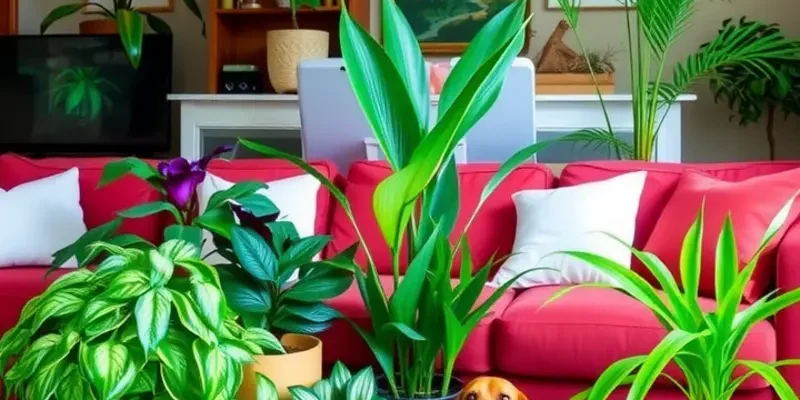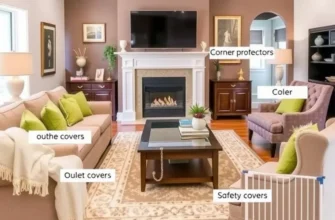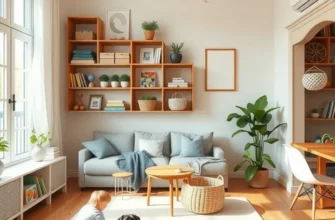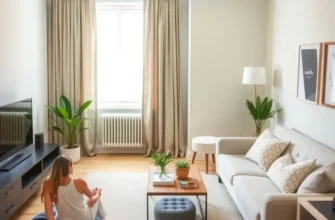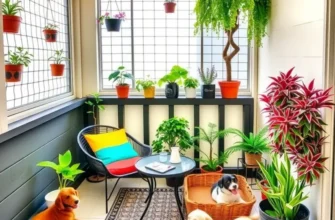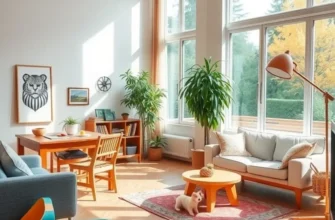Creating a cozy and nurturing environment for your family pets is essential, especially when it comes to choosing plants for your apartment. As families, pet owners, and couples often navigate limited space, selecting pet-safe houseplants becomes crucial not just for aesthetics, but for the health and comfort of all family members. It’s easy to enjoy the calming presence of greenery while ensuring that your furry friends won’t be harmed by nibbling on leaves. This guide will help you discover which plants are safe for both pets and kids, so you can fill your apartment with vibrant life without worry. Plus, we’ll share tips on how to care for these plants and some fun ideas for incorporating them into your home decor. Together, let’s cultivate a pet-friendly, vibrant space that enhances the quality of life in your apartment, ensuring your beloved companions can safely share your cozy little world.
Choosing the Right Pet-Safe Plants
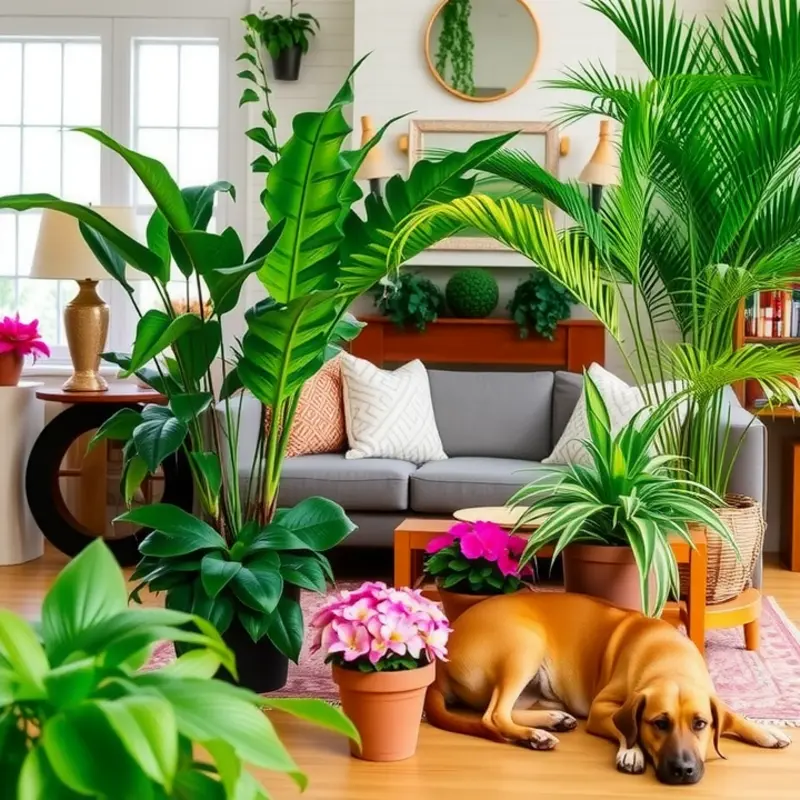
Bringing the outside indoors with houseplants can enhance the ambiance of your living space significantly. Pet owners, however, need to navigate this decor option cautiously to ensure their leafy additions are pet-safe. Fortunately, there are several non-toxic plants that are both beautiful and easy to care for.
The Spider Plant (Chlorophytum comosum) is an excellent choice for pet owners. With its cascading leaves, this plant adds a vibrant touch to any room. Its tolerance for indirect lighting makes it ideal for apartments, where direct sunlight may be scarce. Caring for a Spider Plant is relatively straightforward: water it sparingly, allowing the soil to dry out between waterings to prevent root rot.
Next, consider the Boston Fern (Nephrolepis exaltata). Known for its lush and feathery foliage, it can elevate the aesthetic appeal of your interiors. This fern thrives in humid conditions, making it well-suited for bathrooms. Regular misting and maintaining soil moisture will keep your Boston Fern healthy and verdant. Its preference for indirect light allows flexibility in placement, from hanging baskets to plant stands.
The Bamboo Palm (Chamaedorea seifrizii) is another pet-friendly option. This elegant palm provides a touch of tropical charm and can grow up to several feet tall. Bamboo Palms are particularly effective at filtering air impurities, contributing to a healthier indoor environment. They flourish in bright, indirect light and require moderate watering. Let the top inch of soil dry out before the next watering cycle.
Integrating these plants into your living space can be seamless with a few practical tips. For small apartments, consider vertical gardens or hanging planters to save floor space while still enjoying the presence of greenery. Adjustable shelves also allow for height variation, offering dynamic and lively decor. Additionally, combining different plant types can create contrasting textures and colors, enriching the visual landscape of your home.
For those looking for alternatives to traditional pot placements, DIY window planters can be an excellent solution. These are stylish additions that leverage natural light, ideal for tropical pet-safe plants like the Bamboo Palm. Potted spider plants can accompany window sills, brightening the areas without compromising on safety.
While choosing pet-safe plants is crucial, remember to monitor your pet’s interaction with them. Ideally, plants should be placed out of reach to prevent any accidental ingesting. Pet-friendly choices like Spider Plants, Boston Ferns, and Bamboo Palms not only safeguard your furry friends but also beautify your living space. With a little care and creativity, you can create a green haven that’s both safe and stunning.
Caring for Your Green Companions
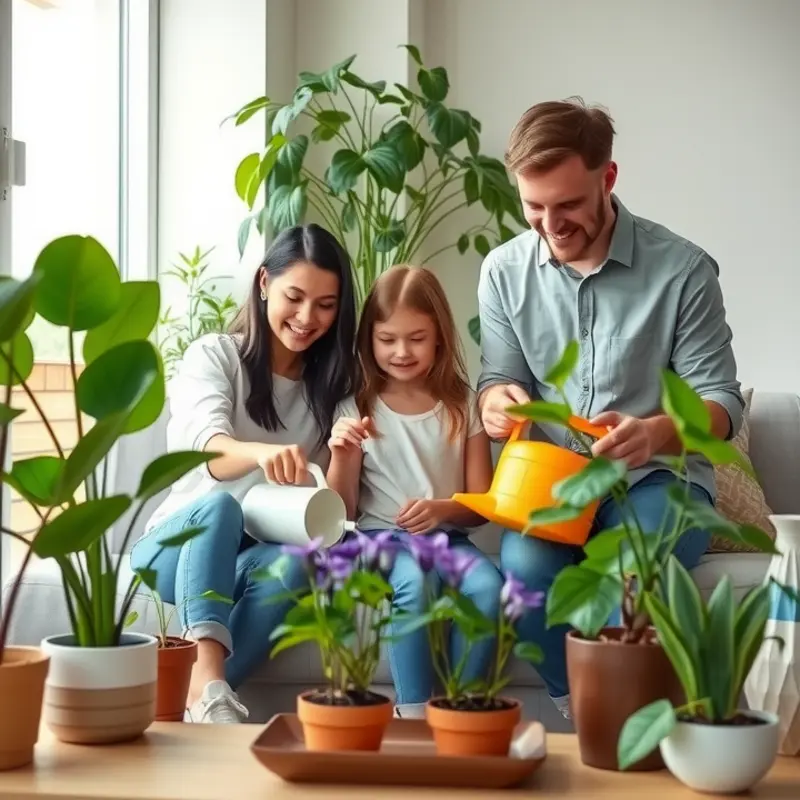
Nurturing pet-safe plants means fostering a rewarding relationship with your green companions, harmonizing with your daily family routines. To start, understanding the specific watering needs of your plants is crucial. Over-watering is a common mistake, as excess moisture can drown roots and invite pests. Utilize the touch test: stick a finger into the soil up to the first knuckle. If it feels dry, it’s time to water. Generally speaking, most indoor plants require watering once a week, but always adapt based on the climate and your home’s humidity levels.
Proper light conditions are equally important. Most pet-safe plants thrive in indirect sunlight, avoiding the harsh mid-day rays that can scorch leaves. For instance, placing your plants a few feet away from a well-lit window ensures they receive ample light without direct exposure. Rotating the plants every few weeks encourages even growth, preventing them from tipping toward the light source.
Emphasizing easy maintenance is key amidst family life. Opt for plants that don’t demand daily attention. Start with robust options like Boston ferns or spider plants, which are forgiving to overlooked care tasks. Remember, the primary goal is to enjoy rather than stress over plant care.
Incorporate plant care into family routines by allocating specific roles for each family member. Assign tasks like watering or dusting leaves to different days of the week. Creating a fun and engaging plant care calendar can make the responsibility a shared family activity. Everyone, including young kids, can participate in these simple tasks, fostering a sense of accomplishment and teamwork.
Use a straightforward checklist to simplify plant care:
- Water once a week, using the touch test as a guide.
- Rotate plants every two weeks for even growth.
- Wipe leaves monthly to remove dust and enhance photosynthesis.
- Fertilize during growing seasons using natural options.
- Prune dead leaves to encourage new growth.
Most importantly, consider incorporating a hydroponic system if you’re someone who travels frequently or has an unpredictable schedule. This can automate the watering process, keeping your plants healthy even when you’re busy or away.
Lastly, if your space allows, exploring a DIY window planter can be a fun project that enhances your indoor garden while saving valuable floor space. For guidance on creating your first window planter, you might find this DIY window planter guide useful.
Overall, embracing plant care as a family activity not only ensures a thriving green home but also strengthens bonds. By setting up a system and engaging everyone, you create a lively home environment where both pets and plants thrive harmoniously together.
Final words
Bringing pet-safe plants into your apartment can truly elevate your family’s living experience, providing fresh air, colorful aesthetics, and a safe environment for your furry companions. By choosing safe choices like the Spider Plant and Bamboo Palm, and delivering proper care routines, you’ll ensure your space remains vibrant and healthy. It’s a fulfilling cycle, as caring for plants can also create beautiful family moments, teaching young ones responsibility and appreciation for nature. Nurture both your greenery and your pets while enhancing the comfort of your home—the bond you build will create lasting memories that enrich your family life. So, let’s create that nurturing oasis you can all enjoy together!

